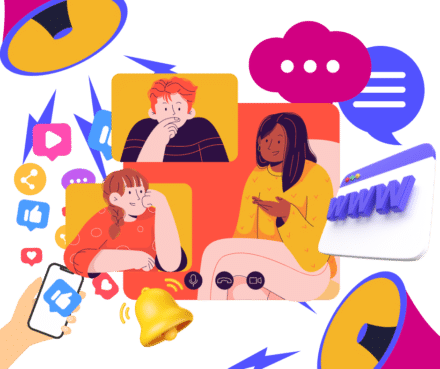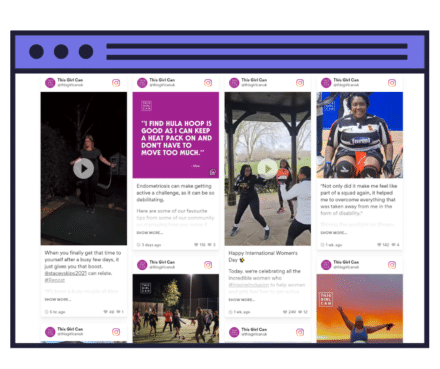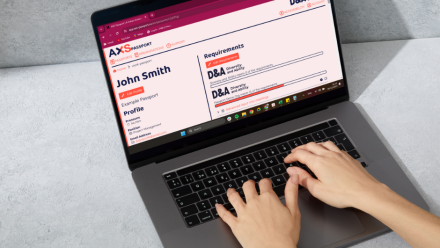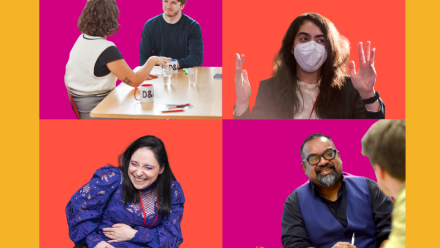Marketing to an Intersectional Audience
15th March 2024 by Scarlett James
Communications Strategies for Inclusion

In today’s digital age, reaching a diverse audience is about more than just casting a wide net. Understanding the intricacies of audience demographics and recognizing the importance of intersectionality is key. But what exactly does that mean?
We’ve previously defined intersectionality in our blog post What is Intersectionality and Why Does It Matter? As well as throughout our first series of Labels and Legacies ‘Embracing Intersectionality’. Catch up and take the podcast on the go. Now let’s explore why it’s crucial for modern marketing campaigns, social media and internal communications.
Why is intersectionality important in inclusive communications?
In Marketing
In today’s world, people want brands to share their values. Not considering intersectionality can push away potential customers and make brands miss important insights. By looking at intersectionality, brands can better understand the different needs and views of their target groups.
For instance:
Karen and Aleja, both aged 39, identify as Disabled women. They may at first appear to be similar but they are from different ethnic backgrounds. This means they likely have vastly different lived experiences.
Organisations that fail to grasp intersectionality will lack the necessary insights for effective marketing campaigns. With an understanding of intersectionality, brands will have all the information they need for their campaigns.
Inclusive communication goes beyond simply following guidelines and ticking boxes. The aim should be creating an environment where everyone feels valued, respected, and included is important. This means actively seeking out diverse perspectives and voices and incorporating them into your messaging in a meaningful way.
When you prioritise inclusive communication, you show that you value diversity and create a welcoming space for everyone. This can make customers more loyal to a brand, as they prefer companies that share their values and beliefs.
To make your brand inclusive, relatable and authentic, understand and include diverse perspectives in your messaging. You’ll find you’re able to connect with a broader audience and build brand awareness that truly resonates with consumers from all walks of life.
In Internal Communications
Just as brands must embrace intersectionality in their external communications, it’s equally important for internal communications within organisations. Recognising the intersectionality of employees’ identities fosters higher engagement and builds a stronger sense of community. You can use data and insights to learn more about your people, but don’t focus on labels; collect data that doesn’t pigeonhole them into one aspect of their identity. For example, the AXS Passport Organisational Portal allows you to understand the plethora of experiences within your organisation, without reducing people to numbers or invading their privacy. It’s an invaluable tool for HR and internal communications.
An intersectional lens ensures equitable access to information and enables all staff members to contribute fully to your organisation’s success.
In Social Media Campaigns
Successful social media campaigns go beyond catchy slogans and eye-catching visuals.
The best social media campaigns connect with people on a personal level. They make people feel understood and valued. This connection is made by understanding the specific experiences and difficulties that people in the community go through. It shows that the campaign acknowledges their challenges and is dedicated to creating a positive change.
By ensuring that even the most marginalised members of the community can access the campaign, your organisation is demonstrating inclusivity and a commitment to equality. This approach not only helps to reach a wider audience but also fosters a sense of community.
Ultimately, campaigns that resonate on a deeper level are more likely to inspire action and create lasting change. At D&A our social media is always created with intersectionality in mind, find inspiration and follow us on Instagram, LinkedIn, Facebook and X (Twitter).
If you’re creating a beautiful campaign around body neutrality with a target audience of young women. You would make sure to highlight Disabled women, Black and Asian women, and trans women. You would also use alt text and accessible colour contrasts on every piece of content. This way you’re ensuring a greater pool of your audience sees themselves in your campaign, especially when considering women are more likely to identify as Disabled; 18.7% of women in England identify as Disabled according to the 2021 Census (Office for National Statistics).

Caption and Credit: This Girl Can’s social media feed from their website. It shows different posts from them and the campaign.
Case Study: This Girl Can Campaign (Sport England)
In 2014, Sport England launched a campaign targeting the fear of judgement women face regarding exercise. This initiative aimed to break down barriers to fitness through a multi-phase approach. At the end of each phase, they used their learning to find who they weren’t reaching and tackle those groups’ barriers too. Over time, and through learning more about their audience, they recognised more and more the disparities in sport and fitness engagement among different intersectional identities and experiences. The campaign grew to address particular barriers to exercise, focusing on experiences such as breastfeeding and menopause. They developed an intersectional approach, reaching groups that had previously been particularly excluded from exercise including women over 40, women from different ethnic backgrounds and mothers.
They demonstrated that, by understanding intersectionality, you are:
- Reaching the entirety of your target audience (avoiding missing out on vital leads and conversions)
- Safeguarding your brand reputation by not excluding those you’re aiming to cater to
This Girl Can do a great job, but D&A challenge you to do one better. Embed intersectionality from day one by starting with thorough research and by working with those with lived experience of marginalisation.
If this has sparked an interest in intersectional feminism, read our blog ‘Embedding intersectionality and feminism in your approach to D&I’.
Crafting an intersectional inclusive communications strategy:
Understand your audience: Research the different demographics and identities in your target customer segment or internal team.
Inclusive content: Create content that reflects the lived experiences of your audience, avoiding stereotypes and tokenism.
Authentic representation: Ensure that your marketing materials feature diverse voices and perspectives, both in front of and behind the camera.
Accessible communication: Use language and visuals that are inclusive and accessible to all, considering factors such as readability, language proficiency, and sensory input.
Connect with your community: Have open conversations with your audience, listen to their feedback, and include their viewpoints in your campaigns.
Ready to be the best?
The best social media campaigns are intersectional and the most successful internal communications are too. Our inclusive communications training and our inclusive communications reviews will get you up to speed on delivering consistently intersectional communications. Get started today by booking your free consultation with our team.


